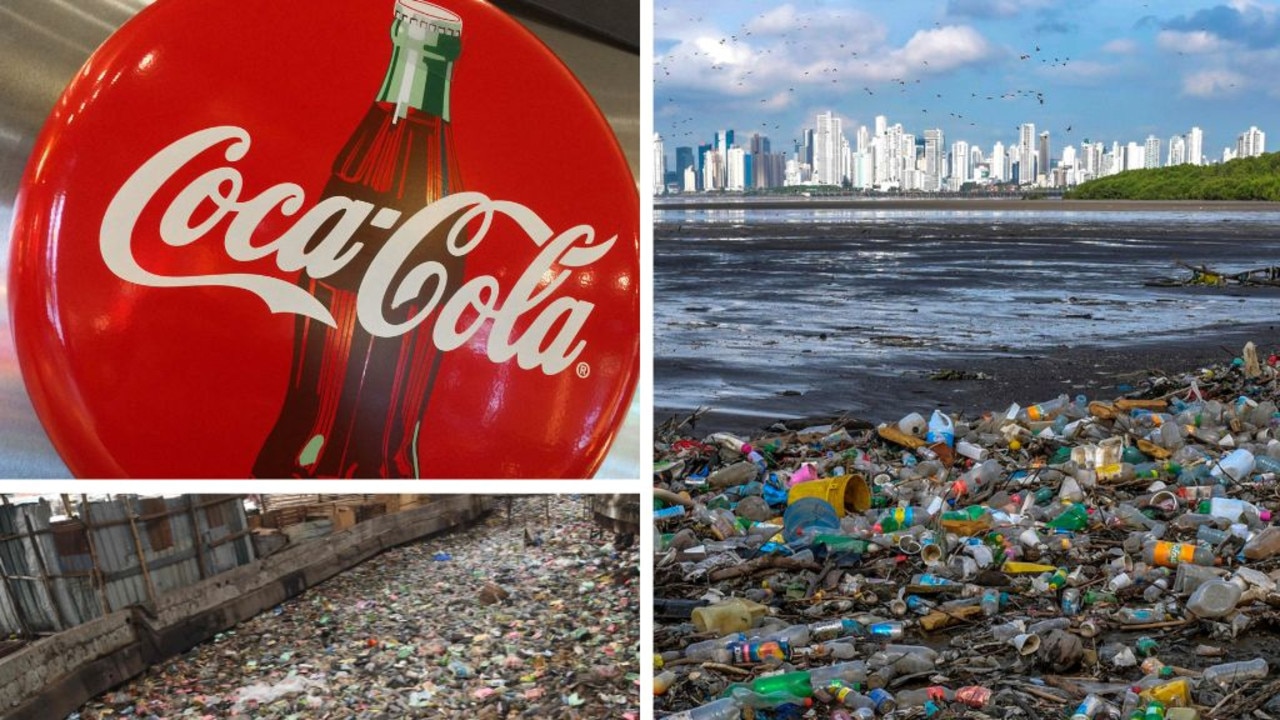Bright Australians are coming up with ingenious concepts which have the potential to take off
From a pocket-sized washing machine to charging your phone with a fruit: these are the next inventions that could change the way we live.
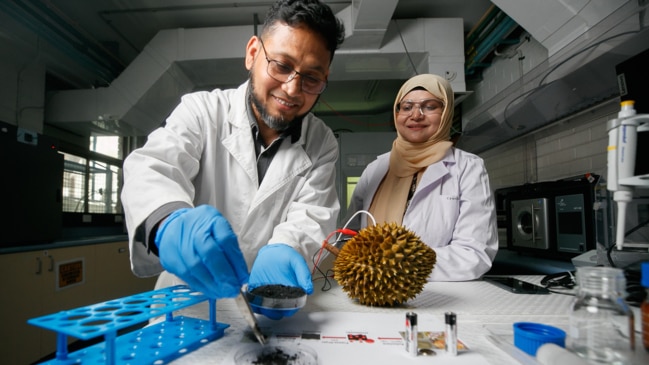
Technology
Don't miss out on the headlines from Technology. Followed categories will be added to My News.
They are the ideas we only wish we’d thought of.
Yet every day, loads of bright spark Australians are coming up with ingenious, out-of-the box concepts which have the potential to take off globally – and deliver big pay cheques.
In recent years, the number of patent registrations has exploded.
A record 32,397 applications were granted nationally in 2021 – up 11 per cent on the previous year – and nearly 3000 of them came from Australian residents.
The government agency responsible for administering intellectual property rights IP Australia said often an idea needed to be registered in multiple jurisdictions.
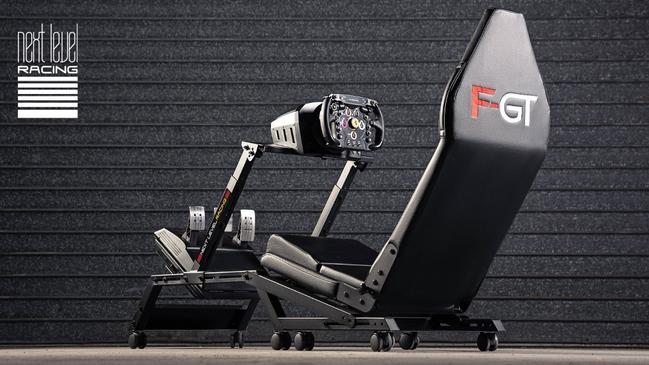
Globally, patent applications rose to more than 278,000 in 2022 – the highest number in a single year.
A recent study, published in UNSW Law Journal, showed more men were having their inventions patented in Australia than women.
Its assessment of applications, filed across 15 years, found 90 per cent of applications had at least one male inventor, while only 24 per cent of applications had at least one female inventor.
“We analysed nearly 310,000 patents and reverse engineered close to one million inventor names to assign them a probable gender,” lead author Dr Vicki Huang, a senior lecturer at Deakin University’s law school, said.
“A male-sounding first name on an application increases the odds of being granted a patent at IP Australia. This is consistent with studies in other jurisdictions such as in the USA.”
The bias was consistent across all years and all fields of invention – whether they had larger or smaller proportions of women.

Ashley Newland knows how to make a brainwave reality, after hatching the idea of a pocket-sized washing machine ahead of a trip to Tanzania.
“I spent the next year approaching outdoor companies to try to get them to licence my invention,” he said.
“Realising that most of them weren’t willing to take a punt on an unproven product, I quit my job as a patent attorney and turned my attention to manufacturing, marketing and distributing the wash bag.
“With revenue now well over $2 million a year for the Scrubba wash bag, not getting a licence in the early days was a blessing in disguise.”
He used his expertise in patent law to secure patents for Scrubba around the world.
“Turning an idea into reality can be tough and it requires a lot of tenacity and often luck,” Mr Newland said, noting his friends thought he was crazy when he first threw in his legal job.
“Inventions are most likely to succeed if they solve a problem that a lot of people face and if people are willing to pay for the solution.
“Our patents have also been very important as a deterrent to would-be copycats and we have been able to shut down several copycat products.”
SMELLY FRUIT CHARGES MOBILE PHONE
The world’s smelliest fruit could ultimately be used to charge electronic devices, including mobile phones, tablets and laptops.
Researchers from the University of Sydney have developed a method that uses durian – the pungent edible fruit of several tree species – to create energy stores for rapid electricity charging.

School of Chemical and Biomolecular Engineering academic associate professor Vincent Gomes said his team used a non-toxic method to convert the waste of durian, which hails from Southeast Asia, and jackfruit into energy stores, known as super-capacitors.
“Compared to batteries, super-capacitors are not only able to charge devices very quickly but also in orders of magnitude greater … than conventional devices,” he said.
“The current super-capacitors are made from activated carbon which are nowhere near as efficient as the ones prepared during this project.”
PORTABLE WASHING MACHINE
The Scrubba bag is a travellers dream – a tiny washing machine, which weighs just 150g and folds into a pocket.
To wash clothes, you add water and cleaning liquid, close and deflate the bag, then rub the clothes against the inner washboard for 30 seconds.

Clothes can be rinsed in the bag, or under a shower, then hung to dry.
Word of the convenience of the Scrubba wash bag has spread among elite Defence units, with the FBI Rapid response team, Seal Team 6 and US Coast Guard among those buying kits.
PORTABLE SCUBA TANK
The Scorkl is an Australian invention by former investment banker David Hallamore that’s straight out of a James Bond film.
For those with a penchant for underwater exploring, going deep sea diving usually means either buying or renting a whole lot of expensive equipment.
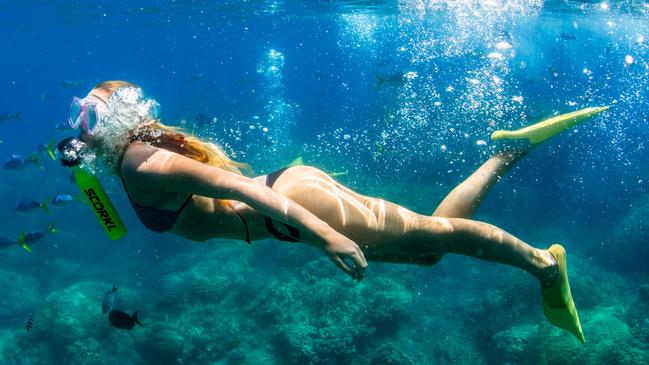
But Hallamore’s invention puts an end to that.
His pump-up diving device is a fraction of the price, lets you breathe underwater for 10 minutes and, once empty, is simply recharged by hand or compressor.
Some famous customers include Facebook founder Mark Zuckerberg and NBA legend Tim Duncan. The gadget was also used in the filming of the docuseries Limitless with Chris Hemsworth.
DIGITAL TOUCH SCREENS
Ever been on a video call and just wanted to dive through the screen and hug that distant loved one? Such technology is in the works, thanks to the so-called Tactile internet.

Microsoft’s senior data scientist Dr Zhanwei Hou, who used to work as a researcher in the School of Electrical and Information Engineering at the University of Sydney, is behind the discovery.
It is as simple as a user wearing a highly-sensitive glove or other type of tactile device, which transfers the sense of touch across the screen.
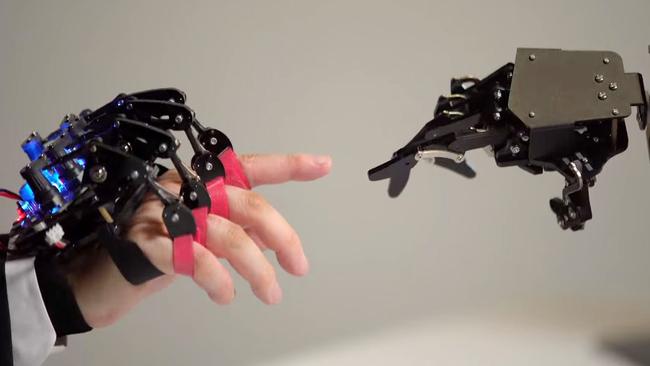
At the other end, a sensor device – such as a robotic avatar – mimics the movement of the human operator and collects the touch feedback.
The challenge for Dr Hou is to find algorithms that achieve zero user-experienced delays.
GROW HERBS IN 60 SECONDS
The SodaStream revolutionised carbonated beverages on the benchtop and James Radford wants to do the same with leafy greens and herbs.
The government consultant from Melbourne is developing an indoor smart garden that lets users grow goods in just 60 seconds.
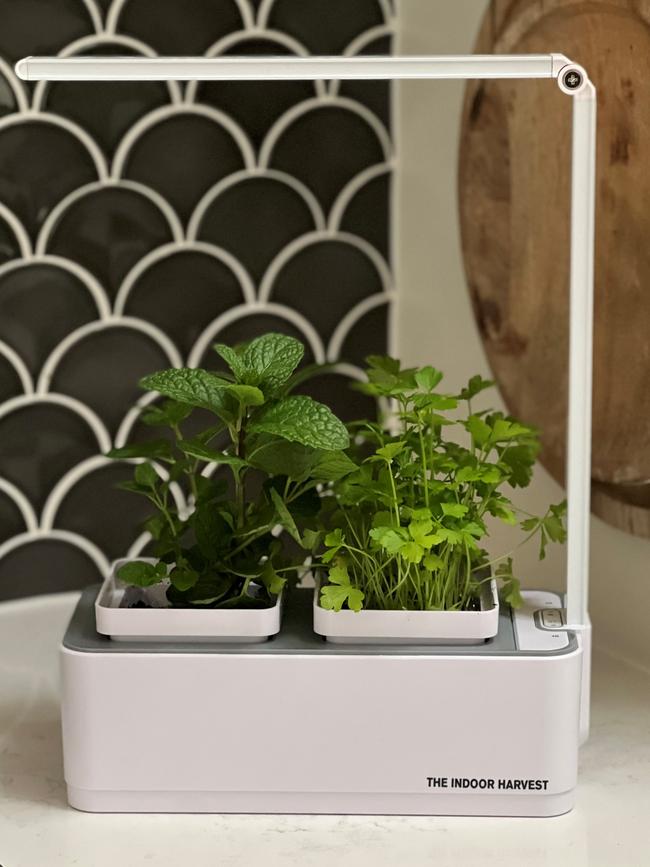

They simply plug the box-shaped device into a power point, add the growing base, water and seeds, before sprinkling on the company’s unique growth serum.
“We are now in discussions with a team of expert university researchers to conduct a growth trial so we can establish the optimal growing conditions and formula so that our greens and herbs can be grown in the quickest, most natural and environmentally conscious way,” Mr Radford said.
“We hope to be selling in the later half of this year.”
3D UNIFORM SCANNING
Another cool defence-ready invention is 3D-uniform scanning technology by Aussie company Bodd and the Australian Defence Apparel New Zealand.
In less than 45 seconds, the device scans a recruit and determines their measurements for combat clothing, service dress uniforms, footwear and accessories.
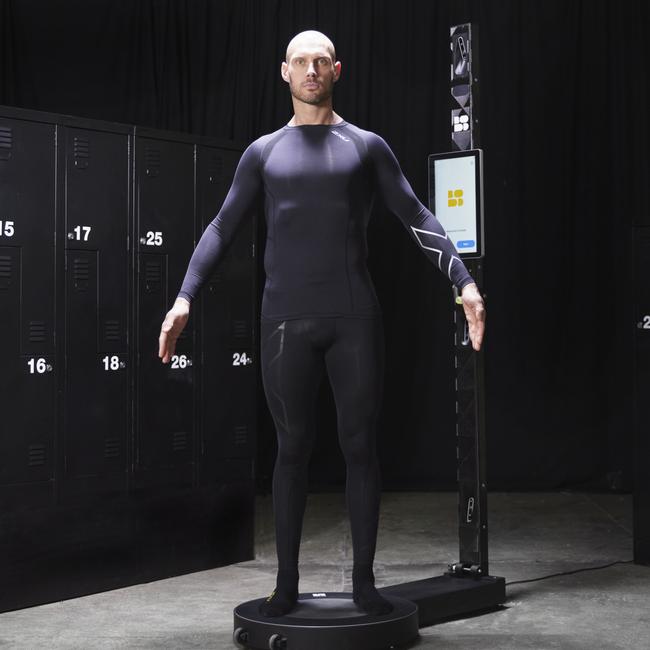
Chief executive officer of ADA, Chris Dixon said the technology will reduce resource requirements and solve apparel distribution challenges.
“This is revolutionary digital fitting technology as it drastically reduces time required for fitting and kitting of defence personnel,” Mr Dixon said.
HOLOGRAM TECH
You may have heard of – or already visited – Queensland’s hologram zoo.
It was a world first when designed by holographics designers Axiom Holographics in 2022, and now company founder Bruce Dell is taking the broader hologram concept to the world.

The company most recently created the hologram aquarium room for Bill Gates’ four-season luxury resort in the Maldives and is in the process of designing a hologram table for India’s Prime MinisterNarendra Modi.
And the advanced technology isn’t just for the eyes. You can also smell the rain, desert and holographic waterfalls without even wearing a headset.
HOME RACING SIMULATOR
Next Level Racing is leading the future of at-home gaming simulation.
The Gold Coast-based company designs, manufactures and exports racing and flight simulators that are used by car markers including Toyota, Ford, Mercedes and the Royal Air Force, NASA, as well as Microsoft and PlayStation.
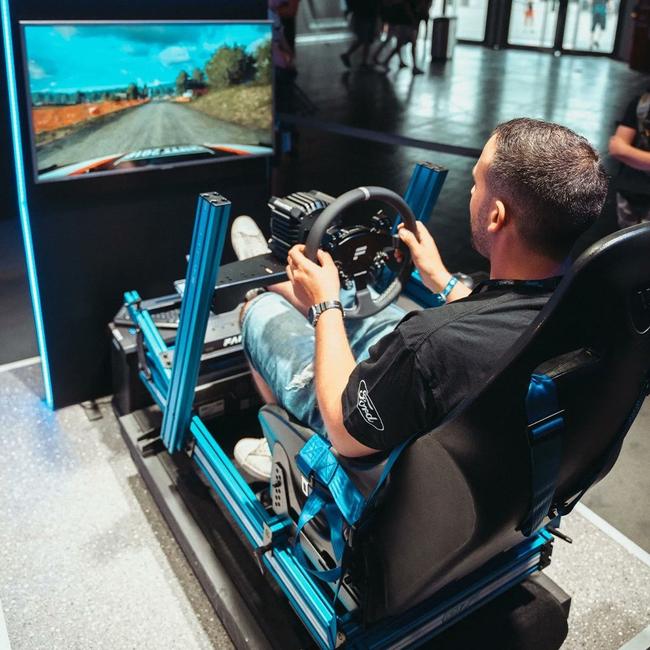
But you don’t have to be a Formula One driver or a big business to enjoy the adrenaline thrill.
Sim racers and gamers can buy professionally-designed equipment, including wheels and seats, to give players a realistic racing simulation experience from the comfort of their home.
STOKTAKE CATTLE ID
Cattle duffing is a growing problem which Dr Phillip Zada thinks she can go some way towards solving using photography.
He has developed an app, called Stoktake, which builds profiles for livestock when a picture of their face is uploaded by their owner.


This profile can be broadly accessed if stock go missing – specifically by the authorities.
While there are already a number of ways for cattle to be identified, Dr Zada said this method was fail-safe.
He said ear tags could be easily ripped off livestock, branding could be modified and DNA matching was costly.
He is now looking to integrate the app into veterinary clinics to connect farmers with vets and ultimately wants to develop a national register of cattle.
ELECTRIC SKATEBOARDS
Avid surfer and snowboarder Jeff Anning turned his love for extreme sports into a million dollar business – Evolve skateboards, the world’s biggest electric skateboard company.
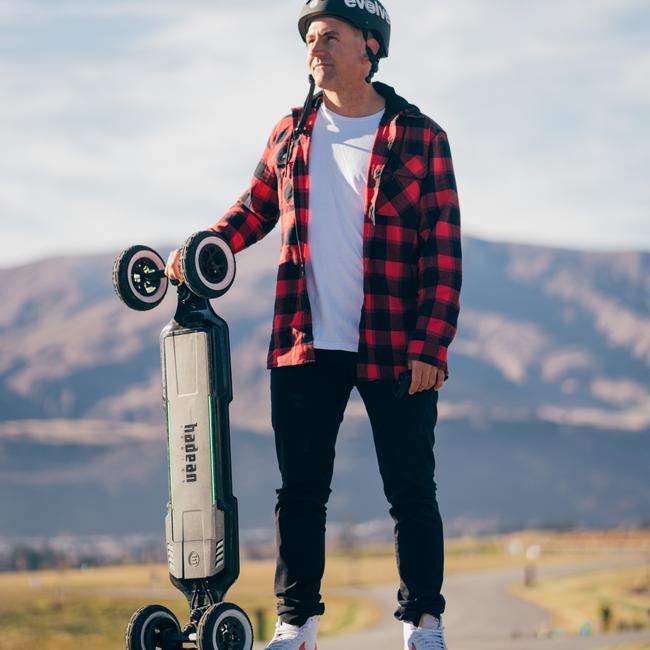
The company first launched with a bamboo series, before progressing to carbon fibre. This means the boards can now house their electronics inside the deck.
“Carbon fibre is much stiffer than bamboo, the traditional material used on skateboards, which means that it doesn’t flex or bend as much when pressure is applied,” Mr Anning said.
“This stiffness can improve the skateboard’s stability and responsiveness.”





